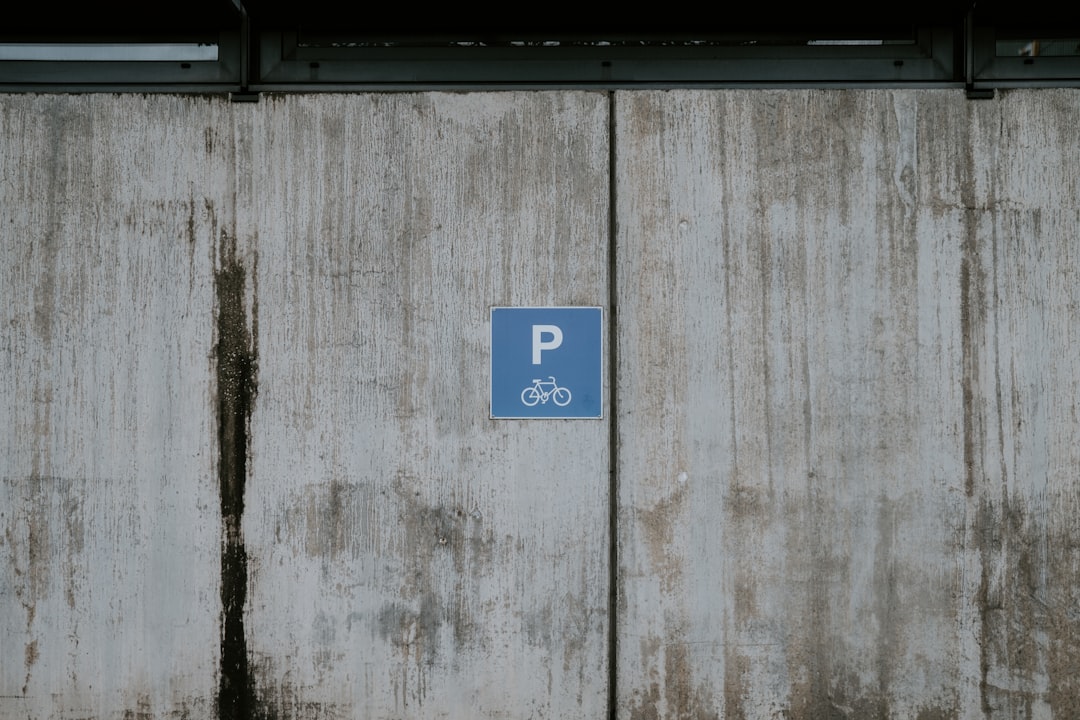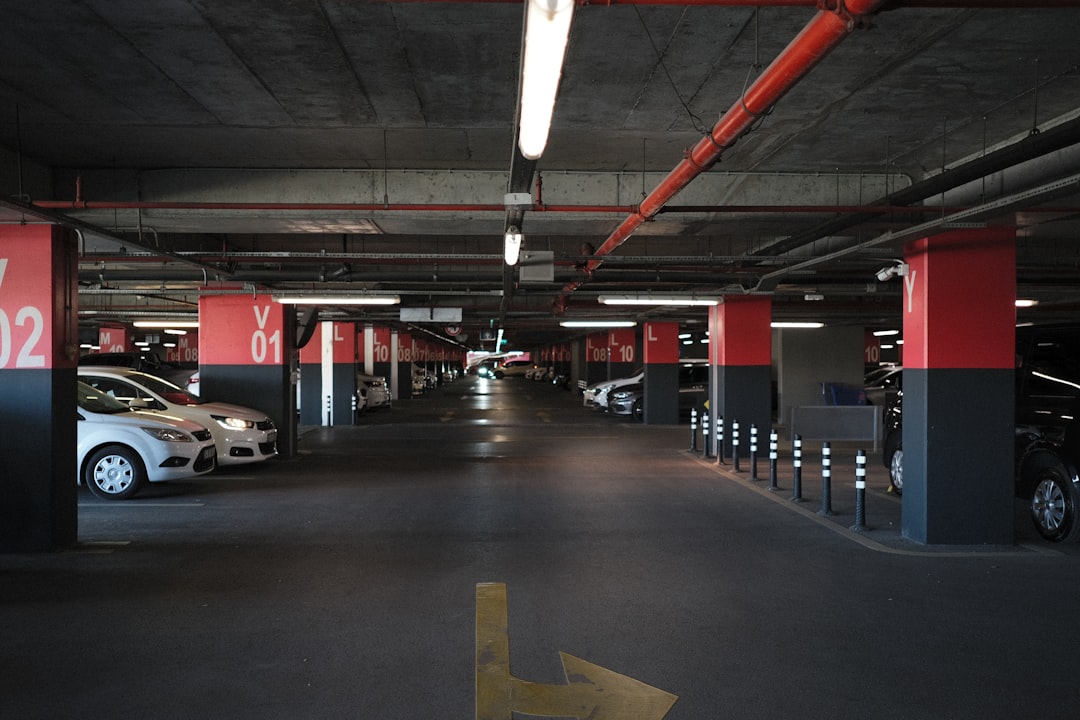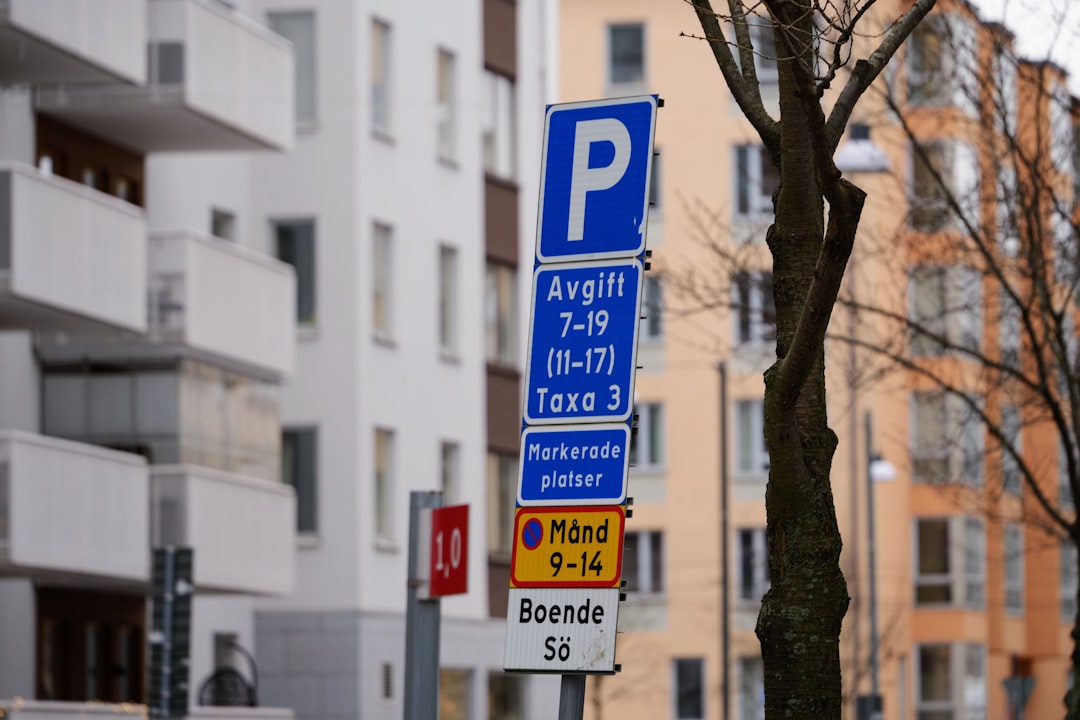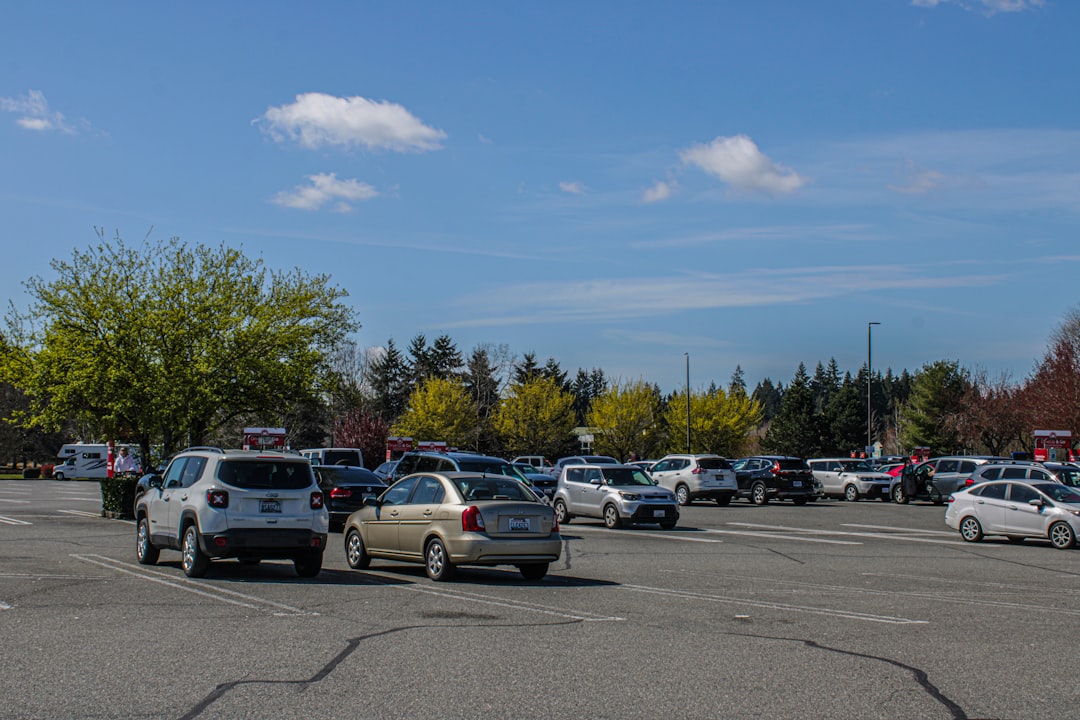

Engage prospects with a scan and streamline customer engagement with FREE QR code marketing tools by Sona – no strings attached!
Create a Free QR CodeFree consultation

No commitment

Engage prospects with a scan and streamline customer engagement with FREE QR code marketing tools by Sona – no strings attached!
Create a Free QR CodeFree consultation

No commitment
Parking space rental services face increasing demand for seamless customer experiences while needing to maximize the value of every parking space in their portfolio. Many operators still use traditional processes such as paper signage, manual reservation logs, or outdated payment methods. These outdated approaches create friction for drivers, make forecasting and occupancy optimization harder, and prevent operators from gathering the data needed to personalize offers and improve loyalty over time.
QR codes in marketing have emerged as practical and flexible tools to bridge the gap between offline parking assets and digital parking management platforms. By allowing instant access to services like booking, payment, or feedback without requiring new apps, QR codes seamlessly move parkers into measurable digital journeys. This modernizes convenience for customers and supplies operators with valuable data insights, solving the common problem of not knowing who uses their spaces or how they engage.
Integrating QR codes into parking space rental services establishes a foundation for stronger retention, more strategic revenue generation, and an updated customer experience. This guide explores how marketers, operators, and business leaders in parking are closing critical gaps such as missing high-value prospects, anonymous parkers, or inconsistent messaging using QR code workflows to create sustainable, measurable growth. Browse Sona QR’s use case library for more ideas.

Retention in parking hinges on effortless experiences and timely follow-up. Many operators lack direct ways to prompt repeat visits, renew monthly passes, or recover one-time users who would become loyal customers with a nudge. QR codes help transform passive, anonymous interactions into identified, trackable activities that power re-engagement. When drivers can scan to reserve, pay, join a loyalty program, or request help, you remove friction in the moment and create a digital connection for ongoing communication. Parking operators can increase revenue and retention with well-placed QR flows.
Consider where traditional workflows hold you back: static paper rate boards that cannot be updated in real time, cash-only boxes that produce zero customer data, or manual sign-up sheets that get lost in the office. Replace those analog touchpoints with QR-enabled alternatives on digital signage that capture intent, speed up service, and feed a centralized system for nurture and retention. Operators can convert first-time users into repeat renters with targeted reminders, dynamic offers, and on-site calls to action that take seconds to complete.
With these foundations, you can build repeatable workflows that turn first-time parkers into long-term customers. As your data improves, your ability to tailor offers, create seasonal passes, and prioritize VIP support also improves.

Parking operations are intensely physical: stalls, gates, kiosks, and attendants. Yet the best decisions depend on digital signals such as who parked, when they came, what they paid, and whether they returned. Without a bridge, operators guess at demand, overprint signs, and underinvest in critical messages that actually drive occupancy and loyalty. QR codes create that bridge, capturing engagement at the source and moving each moment into an actionable digital stream.
Beyond convenience, QR codes deliver strategic value. They standardize how drivers take action across lots with different setups, bring consistency to promotions and help resources, and give marketing teams a way to test offers and creative on physical surfaces, as shown in QR codes in marketing. A well-placed code on a rate board, gate ticket, hangtag, or monthly invoice turns a simple interaction into a measurable step in a longer customer journey.
QR codes address recurring industry challenges:
These benefits show up on real parking materials: rate boards, stall stencils, wayfinding signs, validation posters, printed receipts, and monthly billing statements. When each surface becomes a digital onramp, you move beyond anonymous cash transactions into visible, actionable customer interactions.

Choosing the right QR code format determines whether a scan is a convenient shortcut or a strategic step in your customer journey. Paper-only receipts or untracked payments create blind spots; the right code format brings clarity and control. Begin by mapping your common actions and match them to the format that accelerates that action and captures useful data.
For parking services, formats that expedite booking and payment, collect support requests, and enable loyalty enrollment usually deliver the highest return. Operators that serve commuters, residents, and event-goers can mix formats for each audience with dynamic QR codes for flexibility.
Effective QR code formats include:
Dynamic QR codes are especially powerful in parking because rates change by time and event, capacity fluctuates, and different audiences require different destinations. A dynamic code lets you update the destination as conditions change and lets you use advanced analytics across all codes without reprinting.
Growth often hides in anonymous interactions: the walk-up driver paying with cash, the event patron following crowd flow, or the office visitor who parks once and never hears from you again. These moments are ideal for QR codes that convert fleeting attention into identifiable engagement. By turning each physical touchpoint into a digital entry point, you can retarget, drive repeat bookings, and reduce churn among monthly subscribers.
Consistent messaging across your physical footprint also matters. If your website advertises a loyalty discount but your garage signage does not, you miss opportunities. QR codes bring consistency by making the same offers accessible everywhere, and they make every surface measurable so you learn where value concentrates across your portfolio.
Suggested QR code placements:
By placing QR codes in these opportunities and assigning unique codes by lot or campaign, you can build retargetable audiences and steer your marketing budget toward the highest-yield locations.

A persistent pain point in parking is not knowing which visitors intend to return or upgrade. QR code workflows deployed at decision points convert passive interest into explicit signals that you can measure and act on. Start with three core use cases that map to the most common customer actions and build from there.
By standardizing these use cases across your garages and lots, you create a consistent experience for drivers, simplify staff training, and accumulate comparable data. Over time, this yields better segmentation, stronger offers, and higher retention.
These three use cases tie each interaction to measurable outcomes and give you the data needed to tune products and messaging across locations.
Every scan tells a story: where the driver was, what message they saw, and what they wanted to do in that moment. When you deploy QR codes across stages of the journey, you can infer intent and build segments that drive more relevant follow-up. Commuters scanning weekday morning rate boards are different from concert-goers scanning after 9 p.m., and tenants scanning a monthly invoice behave differently from drop-ins. Learn how to turn these intent signals into revenue.
Turn this contextual signal into an audience strategy. Create codes specific to journey stages and actions, sync them to your CRM, and trigger next steps such as email reminders, SMS offers, or lookalike ad audiences. Doing so reduces waste and improves retention because your messages align with the user’s real behavior.
With behavior-based segments, you can retarget scanners through email, SMS, and paid media. For example, create a “scanned at entrance during weekday mornings” audience and send them a limited-time monthly pass discount, or retarget “scanned during concert season” with nearby event bundles.
QR codes unify your physical assets and digital channels so that the same campaign message reaches drivers at the right time in the right place. They also make offline media measurable, which strengthens planning and budgeting across the marketing mix. By connecting on-site signage, direct mail, social media, and paid placements with QR, you can compare performance and reallocate spend to what works.
For parking operators, the most common media include garage signage, property flyers, rate boards, neighborhood partnerships, and invoices. Align the QR destination with the surrounding message: a “Scan to reserve now” sign should load inventory in one tap, while a “Join our commuter pass” sticker at an elevator should load a short enrollment form. Keep calls to action consistent across channels so drivers recognize the offer wherever they see it.
QR codes serve as the offline onramp to your digital marketing engine. With a centralized platform such as Sona QR, you can manage all codes, monitor performance, and sync scan data to your CRM and ad accounts for consistent journeys across every channel.
QR campaigns succeed when they are planned around a clear outcome, designed for the environment, and measured from scan to revenue. Parking operations that treat QR codes as a system rather than a one-off tactic capture more demand and continuously improve results. Use this checklist to plan and optimize, then repeat.
Keep in mind that deployment contexts differ: a dim garage ramp is not the same as a sunny surface lot or an email receipt. Always test in real conditions and validate that the code, call to action, and destination are suited to that context. Then tie each code to a goal such as conversions, reviews, or subscription upgrades.
Select the action that has the highest impact on your business outcome. For casual parkers, scan-to-pay or scan-to-reserve shortens lines and captures contact details. For tenants and nearby businesses, scan-to-enroll in a monthly pass increases recurring revenue and reduces churn. For event nights, scan-to-bundle with prepayment improves flow and drives upsells like premium stalls or EV charging.
Define success metrics before you print anything. Examples include conversion rate from scan to booking, percentage of scanners who opt into loyalty, average visits per identified user, or renewal rate among monthly pass holders who received QR-triggered reminders.
Choose dynamic QR codes for any destination that could change or where you want analytics and retargeting. Dynamic codes allow you to update links, run A/B tests, and track scans by location, device, and campaign. Static codes can work for evergreen content such as a parking rules PDF or a simple contact page but they should be the exception.
Map formats to the action. Use a web link for booking and payment, SMS or email initiation for support and feedback, app downloads for advanced features, and vCards for quick contact saves. Sona QR supports all of these types and lets you manage them centrally.
Design for the viewing distance and environment. Codes on entrance banners should be larger with high contrast and a short URL, while receipts can use smaller codes with clear CTAs. Include a benefit-driven prompt such as “Scan to reserve and save 10%” or “Scan for fast exit payment.” Add a simple frame or arrow to call attention and your logo for brand trust.
Test scannability in the real world. Check multiple angles, distances, and lighting conditions, including glare on glossy surfaces and low light in garages. Validate on iOS and Android devices and across popular scanners. Ensure the landing page is mobile optimized, loads fast, and keeps steps to a minimum.
Install codes at entrances, pay-on-foot kiosks, elevator lobbies, exits, and on printed receipts and invoices. Make sure the message and destination match the context. For example, entrance signs should go to booking first, while exit signs should prioritize payment and loyalty enrollment.
Use unique codes by lot, level, or campaign to enable granular performance tracking. For B2B outreach, place codes on direct mail, sales one-pagers, and trade show materials. For residents, use codes on move-in packets and building newsletters.
Track more than scan counts. Connect each code to downstream outcomes such as bookings, subscriptions, reviews, and support requests. In Sona QR, monitor scans by time, location, and device; in Sona.com, attribute scans to pipeline and revenue using identity resolution and multi-touch models.
Run experiments. A/B test calls to action, design frames, and landing page layouts. Compare performance by placement and creative. Use insights to refine offers, redeploy top-performing assets to more locations, and retire underperformers.
Following these steps ensures that every QR code contributes to measurable business value and improved retention over time.
Operators often struggle to prove which marketing activities drive real business results. Knowing a code was scanned is useful, but without tying the engagement to a booking, a subscription renewal, or a customer satisfaction improvement, you cannot optimize spend or prioritize the right campaigns. For a deeper framework, see Sona’s blog on offline attribution. The goal is to connect the dots from first scan to revenue and retention.
Start by standardizing your tracking approach. Assign UTM parameters to every QR destination, generate unique codes by location and campaign, and ensure your landing pages and forms capture essential identifiers such as email or phone with consent. Then connect your QR platform to your CRM and analytics tools so the signal flows automatically and becomes part of your customer record.
Analytics-driven QR strategies let you iterate with confidence. Over time, you will uncover benchmarks such as typical scan-to-visit rates by placement, conversion rates by offer type, and retention improvements among segments exposed to specific QR flows. Many operators see scan-to-action rates of 20 to 40 percent when the destination is optimized and the value is clear.
Scaling QR initiatives across multiple lots or garages requires consistent standards, intuitive experiences, and automation. Without them, teams struggle to keep messaging current, track results, or avoid creative fatigue. The following best practices focus on predictable wins in parking and help you extend impact without complexity.
Prioritize the media your audience already uses. For example, if your tenants rely on printed invoices, feature QR prominently there and add a callout explaining the benefit. If your commuters primarily interact at the entrance and exit, ensure these placements are tested in real conditions and load destinations fast even on poor connections.
Creative deployment examples include a peel-off QR sticker on hangtags that links to valet tipping and post-visit surveys, or a QR-enabled invoice that lets monthly subscribers update billing details and renew in one tap. Explore QR on stickers and labels for quick implementation.

Concrete examples help teams visualize what success looks like and where to start. While results vary by market, several patterns hold true when QR is used to reduce friction, improve consistency, and capture intent. Look for opportunities in your portfolio that share similar characteristics and adapt the tactics accordingly.
Beyond one-time campaigns, the most successful operators treat QR as an infrastructure layer. They standardize code design and messaging, create a library of destinations for common scenarios, and implement a testing cadence to keep offers fresh and effective.
You can also weave user-generated content into your flow. For example, offer a monthly drawing for customers who scan, leave a review, and share a photo of their parking experience with a branded hashtag. QR makes participation easy and gives you another signal for retargeting.
Even well-intended QR programs can underperform if the basics are ignored. Success depends on clear value, frictionless destinations, and data continuity from scan to outcome. Focus on the small execution details that compound into bigger gains across your network.
Use your analytics to inform decisions. If a particular entrance sign generates high scans but low conversion, the issue may be lighting, page load time, or unclear pricing. Where conversions are strong, document the creative, CTA, and placement for reuse in similar environments.
Commit to continuous training and optimization. The teams that set standards, review dashboards weekly, and run small tests repeatedly see compounding improvements in utilization, satisfaction, and retention.
QR codes have moved from convenient add-ons to strategic assets for parking space rental services. They close the gap between physical operations and digital data, allowing you to capture demand at the source, personalize follow-up, and prove what drives bookings, subscriptions, and renewals. When every surface becomes a digital entry point, you can map the journey end to end and improve it with each cycle.
Here is the promise in simple terms: instant engagement across signs and receipts, a connected experience that carries people from drive-by to monthly subscriber, and actionable data that turns each scan into a signal for growth. With Sona QR, you can create, manage, and track codes across your portfolio, then use Sona.com to connect scans to revenue through identity resolution and multi-touch attribution. Start small with a single lot or campaign, measure, and scale what works. Start creating QR codes for free.
QR codes have revolutionized parking space rental services by transforming how providers engage and retain customers. From streamlining the booking process to offering instant access to parking details, QR codes deliver seamless, contactless experiences that keep users coming back. Imagine effortlessly tracking which promotions or locations generate the most repeat renters—and instantly adapting your campaigns to maximize retention and revenue.
With Sona QR, you gain the power to create dynamic, trackable QR codes in seconds that update on the fly without costly reprints. Every scan connects directly to actionable insights, helping you optimize customer journeys and boost loyalty through personalized interactions. Don’t let missed opportunities take up space—start for free with Sona QR today and turn every QR scan into a lasting customer relationship.
You can rent out your parking space by placing QR codes at entrances or on signage that link to mobile-friendly booking and payment portals, allowing drivers to scan, reserve, and pay instantly without needing an app.
QR codes provide seamless, contactless access to booking, payment, and support services, capture valuable customer data for personalized offers, increase retention, and enable real-time updates without reprinting signs.
Digital marketing services integrate QR codes to track customer engagement, segment audiences for targeted promotions, automate follow-ups, and optimize campaigns by analyzing scan and conversion data to drive repeat bookings and higher utilization.
Technologies include dynamic QR codes for reservations and payments, SMS or email initiation for support, app download links for advanced features, vCards for contact sharing, and Wi-Fi access codes to improve connectivity.
Increase utilization and revenue by deploying QR codes at high-intent touchpoints to enable easy booking and payment, offering loyalty program enrollment via QR, running targeted campaigns with unique codes, and analyzing scan data to optimize offers and placements.
Security is ensured through mobile-friendly secure booking and payment portals accessed via QR codes, identity resolution linking scans to verified user records, and integration with CRM systems to protect data and manage authorized access.
Drivers scan QR codes placed on signage or kiosks to instantly access booking, payment, or support pages, enabling contactless transactions and services without needing apps or cash, which speeds up service and reduces queues.
QR codes are a low-cost solution that can be easily scaled across multiple locations without expensive hardware, mainly requiring investment in dynamic code management platforms and integration with booking and CRM systems.
By generating unique QR codes per location and campaign, tracking scan times, devices, and user behavior, and syncing this data with CRM and analytics tools, you can monitor demand patterns, conversion rates, and revenue attribution.
Legal considerations include ensuring compliance with local regulations on renting spaces, protecting user data privacy when collecting information via QR codes, and providing clear terms of service accessible through digital platforms.
Use Sona QR's trackable codes to improve customer acquisition and engagement today.
Create Your FREE Trackable QR Code in SecondsJoin results-focused teams combining Sona Platform automation with advanced Google Ads strategies to scale lead generation

Connect your existing CRM

Free Account Enrichment

No setup fees
No commitment required

Free consultation

Get a custom Google Ads roadmap for your business






Launch campaigns that generate qualified leads in 30 days or less.
